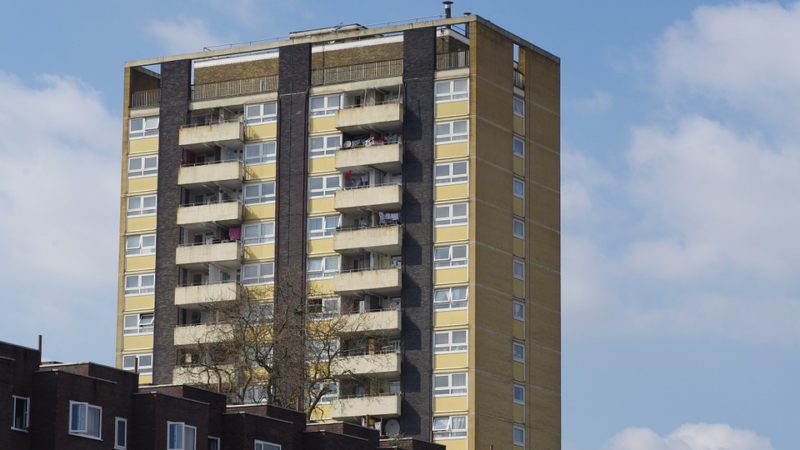
The government last month unveiled changes to ‘permitted development rights’. These rights mean that it’s possible to undertake certain works without having to apply for planning consent. They derive from a general permission granted by parliament, rather than a specific one from the local authority – and as such allow developers to bypass the local planning process.
Permitted development rights have existed since the introduction of a comprehensive planning system in the UK in 1948. But the extent of what they allow has changed significantly. Since 2013, the Tories have hugely expanded these rights, with homes being created through changes of use from office, agricultural, storage, light industrial, retail and various others to residential.
The latest extension of these rights includes allowing developers to demolish unused buildings and industrial premises and rebuild them as homes. The changes have been strongly opposed in consultations, and a group of industry expert bodies recently wrote to the government urging against what it called “reactive planning”. But the government has pushed ahead regardless, packaging it as part of a drive to ‘build, build, build’ to get out of the housing crisis. Here’s why they won’t help.
Poor quality homes
A review of permitted development commissioned by the government and published last month concluded that they have led to the creation of “worse quality” homes. Under these rights, local authorities have no opportunity to enforce space standards, housing quality standards, or design specifications for new developments. The research found that only 22% of dwellings created through permitted development met the nationally described space standards, compared to 73% of units created with full planning permission.
The pandemic has highlighted the stark contrast in living conditions of different people, and these varying conditions have shaped individuals’ experiences of Covid. From high-rise flats to suburban detached houses, the lockdown meant vastly different things for different people. Yet in the middle of this crisis, in which people have been confined to their homes on an unprecedented scale, the government has pushed ahead to allow developers to build homes with no regard to minimum quality or space standards.
This is outlined by a joint letter from the Royal Town Planning Institute, the Royal Institute of British Architects, the Royal Institute of Chartered Surveyors and the Chartered Institute of Building, which says: “Early evidence suggests our built environment has had a significant impact on both physical and mental health outcomes, as well as on our ability to adapt to different ways of working”. People living in well-planned, good-quality homes, with proper considerations of access to space, essential facilities and healthcare, have a far better living experience.
Unaffordable homes
The rights effectively allow developers to bypass the local planning process, and therefore escape any obligations to provide a proportion of affordable or social homes in their schemes. At the start of this year, analysis by the Local Government Association showed that communities lost out on more than 13,500 affordable homes in the past four years through building done under permitted development rights. According to research by the Greater London Authority, of the 15,929 new homes built through permitted development in London between 2013 and 2019, only 71 – or 0.4% – were defined as “affordable”.
Let’s be honest, the current definition of ‘affordable homes’ under the National Planning Policy Framework – with rents set at 80% of market rate – doesn’t represent what most people consider to be affordable. Private rents hit a record high of £700 per month during lockdown, with the median rent highest in London at £1,425. Renters on average spend 41% of their income on housing costs. Meanwhile, house prices have rocketed by more than 270% in the past two decades. The average property price across the UK rose to £241,604 in July with research last year showing that it took until the age of 34 for most people to own their own home. We desperately need the policies outlined in the 2019 Labour manifesto, which would have scrapped this definition for one focused on social rent homes, homes linked to local incomes and low-cost ownership homes again linked to average local earnings.
But regardless of the problems with the current definition, requirements for affordable homes are one of the few tools local authorities do have to mandate developers to contribute something closer to what communities actually need. Extending permitted development rights in this way significantly undermines the already-limited ability of communities and local councils to secure affordable homes in their areas.
We shouldn’t be surprised by this latest development. From the government’s newly unveiled planning proposals – which will remove current mechanisms councils have to secure affordable and social homes – to the dodgy relationships and preferential deals between its ministers and developers, where this government’s priorities lie is clear. They’re all apparently for ‘build, build build’, but they’re not concerned at all about who can afford what’s built and what it’s actually like to live there. This latest change to permitted development rights is a particularly pernicious way for developers to skirt their obligations to local communities. And there is nothing that local councils can do about it.




More from LabourList
‘Bah humbug politics and the cruelty of the two-child limit’
Two-thirds of Labour members back extending BBC licence fee – poll
‘Organise 2026 – We want to lead a Young Labour that listens – that provides for members in every town, village and city’